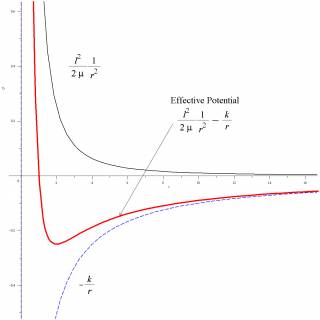You are here: start » activities » main
Exploring the Effective Potential
Highlights of the activity
- This computer visualization activity is designed to help students understand how the effective potential for central force orbits depends on various physical parameters.
- Students use a Maple Worksheet or Mathematica Notebook to explore the parameter space for the effective potential, relating the motion of the orbit with plots of effective potential, examining the effective potential for both attractive and repulsive systems.
- The whole class wrap-up discussion summarizes how various physical parameters can affect the shape of an orbit.
Reasons to spend class time on the activity
We would like our students to understand how the shape of the orbit depends on various physical parameters such as reduced mass or the z-component of angular momentum and how this shape can be predicted by an effective potential diagram. Students use Maple to generate plots of potential energy vs. distance and effective potential vs. distance. Students interpret these graphs to describe the motion of the orbiting object. Students can also vary the effective potential by changing the reduced mass, the force constant, the angular momentum, and the total energy of the system, and see how these parameters effect both the potential energy and the effective potential.
This activity works particularly well when sequenced with other activities.
Reflections
Instructor's Guide
Student Handouts
Maple Worksheet
cfeffpotential.mw (Maple 13)
cfeffpotential.mws (Maple 11 Classic)
